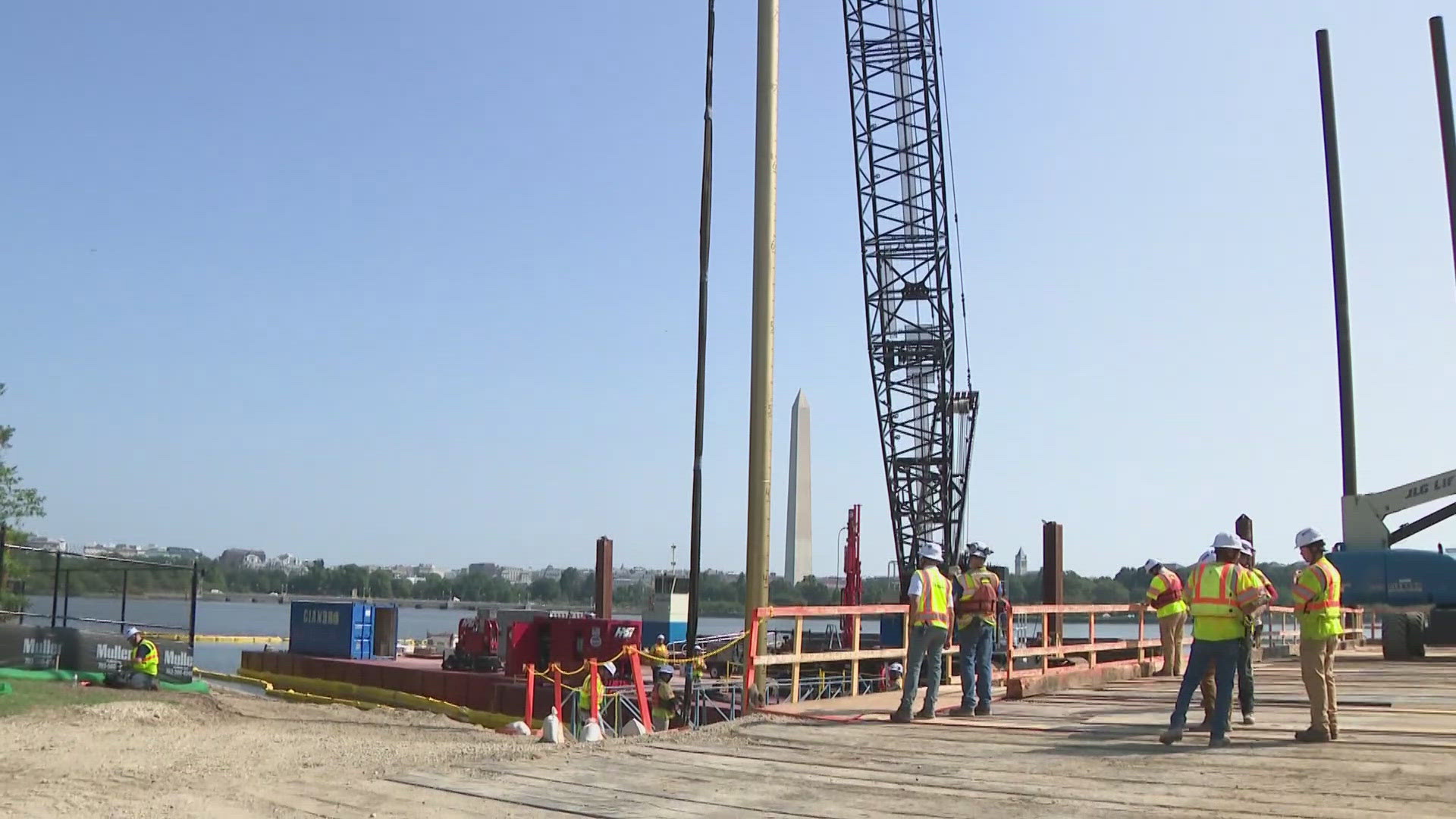WASHINGTON — Daily flooding along the Tidal Basin has damaged dozens of our iconic cherry blossoms and threatened our historic monuments. But change is finally underway.
The $113 million in funding for the rehabilitation of the seawalls around the Tidal Basin and West Potomac Park wasn't easy to come by.
"The passing of the Great American Outdoors Act in 2020 was truly a game changer for the National Parks Service," explains National Parks Service Director, Charles Sams. "While we've seen some funding over the last hundred years, this funding has been the most impactful. We're putting $1.3 billion in the ground over a five-year period to ensure that we are actually making places more resilient and more welcoming for our visitors -- both Americans and our international visitors."
The repair of the Tidal Basin and West Potomac Park seawalls is part of a nearly $500 million in planned infrastructure improvements at the National Mall prior to the 250th anniversary of American Independence in 2026.
Since the seawall was originally constructed in the late 1800s, it has sunk about five feet because it wasn't originally secured to bedrock. But these massive pilings will be drilled 90 to 110 feet into the Tidal Bain to ensure they won't sink again.
The engineers who designed the reconstruction are also accounting for rising sea levels.
"The structural design that has been built into what we're constructing will allow for the walls to be raised an additional four feet in the future as needed," said Jason Jiminez-Pisan, a civil engineer working on the project.
For the next few years, you will notice occasional barriers and screens along the Tidal Basin. But the work will be done in phases so there is still plenty of historic scenery for guests to enjoy.
"We're asking the American public to be patient with us as this construction goes on, but as you can see today, we're working very very hard to keep most of the construction out of site and also to ensure that the pathways and bikeways are still open and useful for the enjoyment of the American people," Sams said.
The new seawall will still follow the historic alignment of the original. It will just be wider and more resilient for everyone to enjoy for many more years to come.

